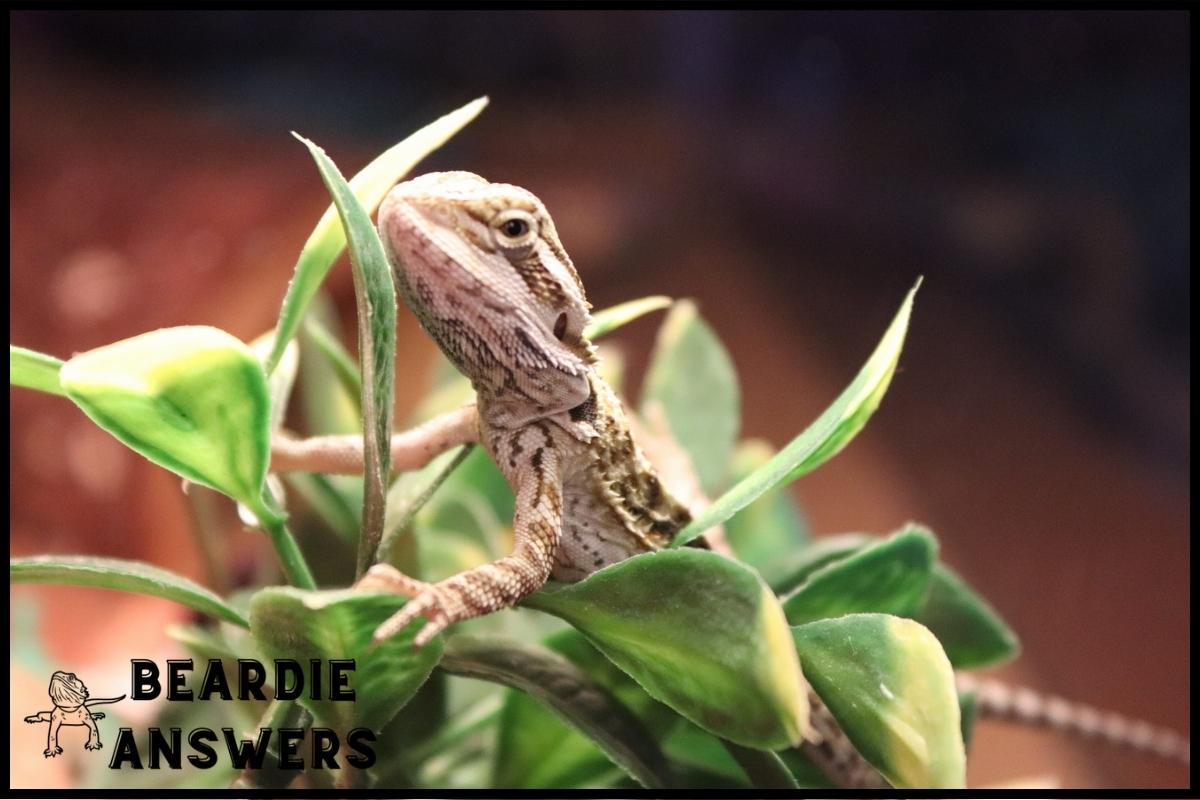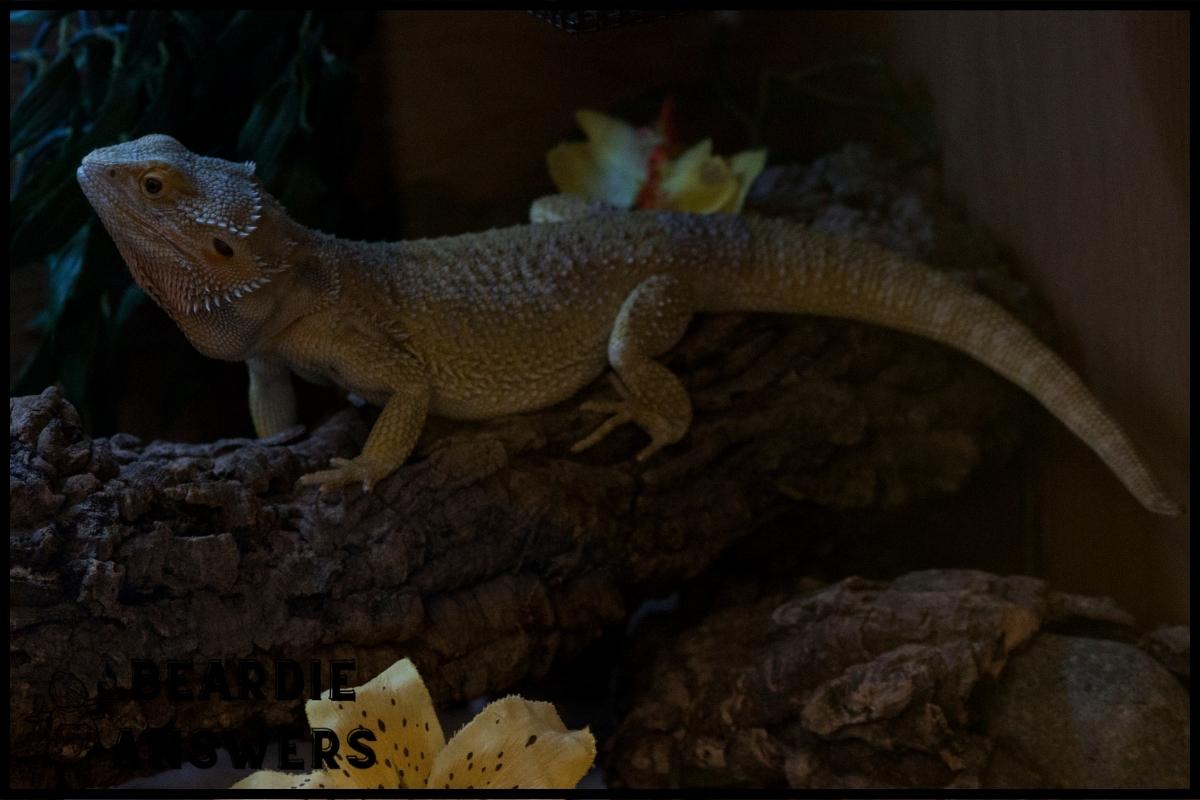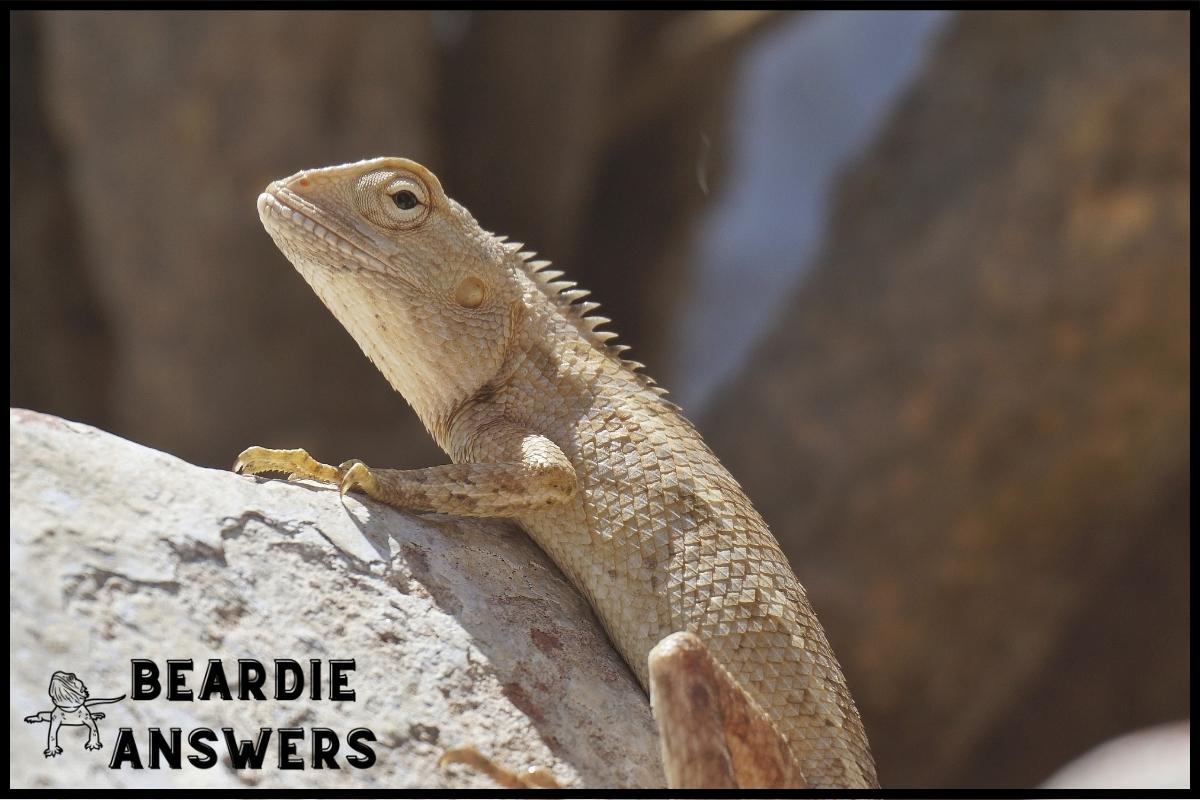Scaleless bearded dragons are a fascinating and rare genetic mutation that lacks scales. However, despite their unique appearance, they require the same care as normal bearded dragons. This means providing a warm and comfortable environment, a balanced diet, and regular vet check-ups. It’s important to note that scaleless bearded dragons are more sensitive to environmental changes and may require extra care.
What You'll Learn
Overview Of Scaleless Bearded Dragons
Scaleless bearded dragons are a rare genetic mutation that lack scales, yet require the same care as regular bearded dragons. These lizards make great pets due to their social behavior, as they enjoy interacting with their owners and other animals alike.
They love basking in the sun or exploring while being handled gently by an experienced owner. In terms of maintenance, scaleless bearded dragons need specific housing requirements in order to thrive and stay healthy. This includes providing them with appropriate temperatures, humidity levels, and lighting for optimal health and development.
Additionally, it is important to ensure that their enclosure has plenty of climbing structures so these active reptiles can exercise frequently. Without proper handling and monitoring of their environment, scaleless bearded dragons may become stressed which could lead to illness or even death.
Moving on from environmental needs, let’s take a closer look at what else we should consider when caring for one of these unique creatures.
Housing Requirements
Scaleless bearded dragons require very specific housing needs in order to stay healthy and happy. As such, those who keep these reptiles as pets must be aware of the necessary lighting requirements and enclosure types needed for optimal care.
A basking lamp is essential for scaleless bearded dragons, since it will produce a light intensity similar to that found in their native habitats. Without this source of heat, your pet may suffer from cold-related health issues such as respiratory infections or metabolic bone disease. The lamp should also provide UVB rays so that your reptile can absorb calcium from its food sources. Additionally, you’ll need to ensure that the temperature around the basking site stays within 85°F – 95°F (29°C – 35°C).
The type of enclosure used for scaleless bearded dragons depends on the size and age of your pet. Hatchlings are typically kept in small terrariums with screen tops while adults often do better in larger enclosures with sliding glass doors. You’ll want to make sure there’s plenty of ventilation too; otherwise your dragon could become ill due to poor air quality.
When it comes to providing an ideal environment for scaleless bearded dragons, temperature and humidity play important roles. It’s vital not only to monitor these factors, but also adjust them accordingly based on the species’ natural habitat conditions.
Temperature And Humidity
Temperature and humidity are vital to the health of scaleless bearded dragons. It is important to maintain a comfortable habitat for them, with temperatures ranging from 75-85°F (24-29°C) during the day, and slightly cooler at night. Humidity should range between 30%-40%.
In order to achieve these levels, you may need to invest in some heating lamps or under tank heaters as well as a thermometer/hygrometer combination device to measure temperature and humidity respectively.
Lighting requirements also play an important role in keeping your bearded dragon healthy. They require 12 hours of UV exposure per day through either natural sunlight or specialized reptile lighting. UVA and UVB bulbs can be used if they have access to full spectrum light throughout their enclosure each day.
It’s essential that all of these conditions are met in order for your scaleless beardie to live a happy and healthy life; otherwise it could put them at risk for serious health issues such as metabolic bone disease.
With these considerations in mind, let’s move on to discuss feeding and nutrition needs.
Feeding And Nutrition
Let’s talk about nutrition requirements and feeding habits for scaleless bearded dragons; they’re just as important as for normal bearded dragons.
I’m curious to hear what you know about what they need and how often they should be fed.
Nutrition Requirements
It’s important to know the proper nutrition requirements for your scaleless bearded dragon in order to ensure its health and wellbeing.
A light diet of insects, greens and fruits should be offered, as well as calcium supplementation several times a week.
In addition, make sure that their food is dusted with vitamin/mineral supplements at least twice weekly.
To monitor how much they are eating, weigh them once every two weeks or so to check if they’re putting on weight correctly.
With these tips, you can help keep your scaleless bearded dragon happy and healthy long-term!
Feeding Habits
Now that you know the diet and nutrition requirements for your scaleless bearded dragon, let’s talk about their feeding habits.
They should be offered food at least twice a day within their enclosure, as well as have access to high-quality UVB lights which will help them digest their food properly.
You can also provide additional calcium supplementation during each meal if needed.
Make sure to feed in moderation since they are prone to obesity.
Finally, remove any uneaten food after an hour or two so it doesn’t spoil inside the tank.
Health And Hygiene
Health and hygiene for scaleless bearded dragons is very important. Proper skin care, parasite prevention, and regular monitoring of the dragon’s health are key to ensuring a long life.
To maintain good health in your scaleless bearded dragon, it’s essential to keep its environment clean, free from parasites, and properly ventilated. Here are three ways you can ensure this:
- Clean the cage regularly with soap and water or a reptile-safe cleaning solution.
- Monitor your pet for signs of parasites such as mites or ticks; if found, treat them immediately with an appropriate treatment plan.
- Make sure the humidity level in their enclosure is between 40%-60%, which will help prevent dryness on their skin that could cause irritation or infections.
It’s also important to remember that while scaleless mutations lack scales they still need proper nutrition and exercise just like any other type of beardie! With these tips in mind, you have all the tools you need to provide your scaleless friend with a happy home and healthy lifestyle.
Moving forward then, let’s take a look at handling & bonding techniques for our scaly friends…
Handling & Bonding
Handling a scaleless bearded dragon is much like handling any other type of lizard, however, they require special care and attention due to their lack of scales. It’s important that you handle them gently and slowly to avoid causing stress or injury. When first getting your bearded dragon accustomed to being handled it may take some time before they are comfortable with the process, but with patience and gentle techniques you’ll find success.
When developing a bond between yourself and your scaleless bearded dragon there are several tips that can be employed to facilitate this connection. For instance, providing regular baths in shallow water will help create an association between you and bathing which can make future handling easier. Additionally, providing treats such as fruits or vegetables also helps build trust between both parties.
Regularly speaking softly near the beardie can also help establish familiarity and comfortability when interacting together.
The key takeaway here is that creating a strong bond with your scaleless beardie requires patience, gentleness, consistency and understanding. With these components firmly in place, you’re sure to have a healthy relationship with your pet for years to come!
Conclusion
In conclusion, scaleless bearded dragons are a unique and rare creature that require the same level of care as regular bearded dragons.
With proper attention to their housing requirements, temperature and humidity needs, feeding and nutrition, health and hygiene, and handling & bonding practices they can be happy and healthy pets.
It’s estimated that less than 1% of all bearded dragons in captivity are scaleless making them an incredibly special animal indeed!
If you’re looking for an interesting pet with a unique look then consider getting a scaleless bearded dragon – it just might surprise you how much love and affection this reptile has to offer!

Hi! My name is Bryan, I am the “one behind the words” here are BeardieAnswers.com. I believe that providing quality care and nutrition is the best way to ensure the health of your pet. Every beardie is special and deserves the best care and attention. If you have questions about your bearded dragon, please don’t hesitate to ask! View My Full Author Page




